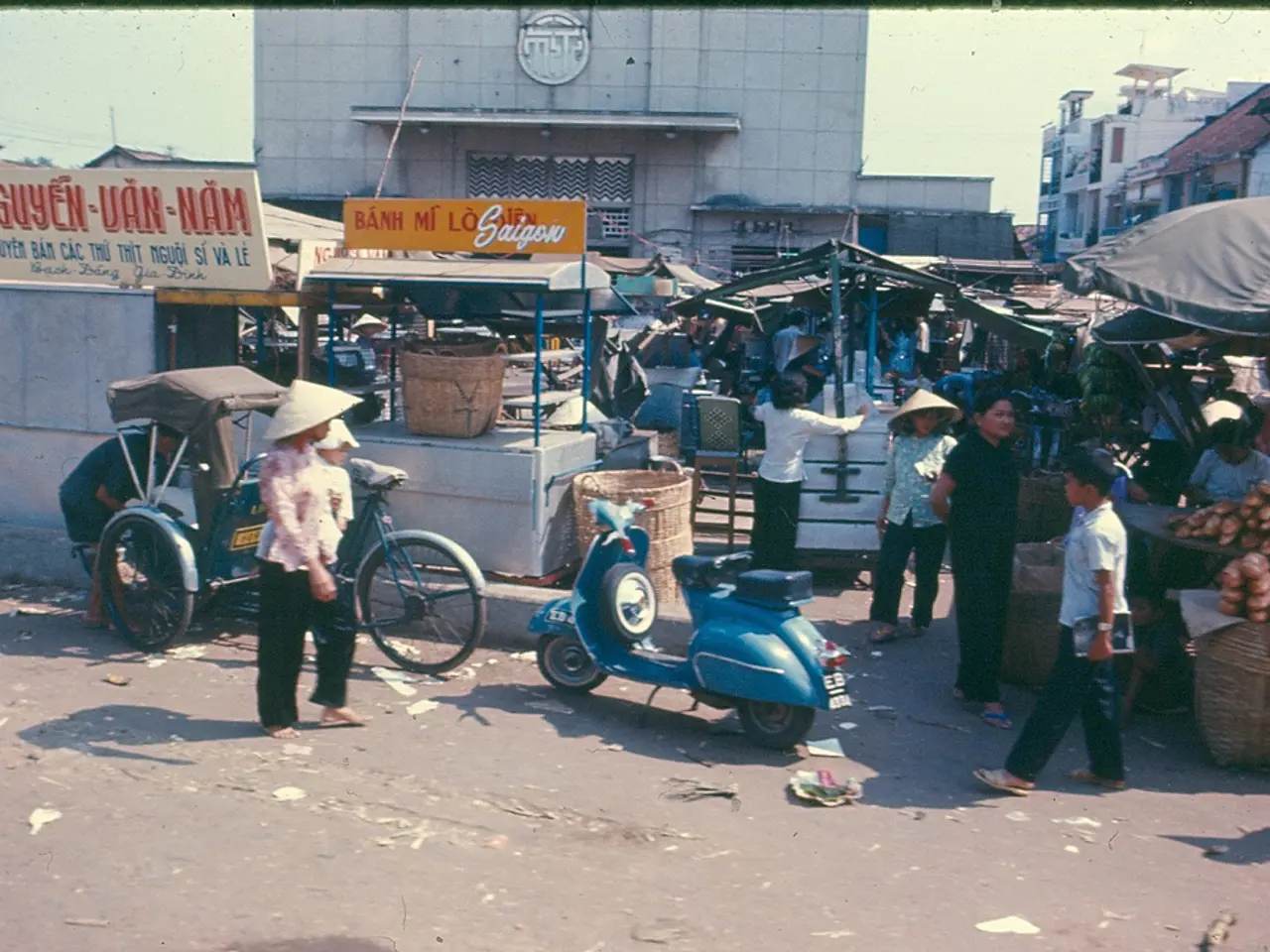Economic decline in April was temporarily halted
April's Economic Revival in Russia: A Partial and Short-lived Phenomenon
The temporary halt in Russia's economic decline in April seems to be more of a localized improvement rather than a widespread recovery. According to the Institute VEB.R, the unadjusted GDP index increased by 0.5% compared to March, following a 1.1% drop the previous month [1].
The growth rate compared to the same period last year accelerated to 1.9%, up from 1.2% in March. For the first four months of the year, growth is estimated at 1.6% [1].
One of the key factors contributing to the April upswing was the resurgence in industrial production. The output of mined commodities saw a significant boost, with coal extraction leading the charge. Among the processed goods, sectors like machinery, petroleum refining, and food processing reported growth [1].
Construction activity surged in April relative to March, increasing nearly 5%, following a 7% drop in March. On the other hand, consumer demand for services rebounded, as passenger traffic and cafe/restaurant visits increased. However, consumer demand for goods, primarily non-food items, continued to decline for the second consecutive month [1].
High-frequency economic data suggest that, at the very least, temporary signs of improvement emerged in Russia's economy in April. The Russian Center for Macroeconomic Analysis and Short-Term Forecasting corroborated this improvement, although it noted that this enhancement appears localized [1].
Specifically, the recovery in the oil and gas sector, with the rise in oil production and refining, and the revival in retail trade, are notable [1]. However, in the non-energy civil sectors of the processing industry, production has shown a consistent decline since the beginning of the year, decreasing by 0.7% on average between January and April, with a 0.4% drop in April [1].
The Industrial Optimism Index for June slightly increased to -4.5 points from -6.6 points in May, as reported by Sergei Tsukhlov from the Institute of National Economic Forecasting of the Russian Academy of Sciences [1]. However, the balance of actual changes in sales for companies fell to -23 points in June 2025, a level similar to that recorded in 2022 [1]. Yet, positive assessments of current sales volumes rose to 51% in June from 44% in May [1].
Accumulated growth in ruble deposits held by nonfinancial organizations from the beginning of 2025 was offset by the sharp decline observed in April. This decline acts as a signal that there might be potential issues with payments, which could lead to a corresponding gradual tightening of business liquidity [3].
The amount of money on the accounts of companies decreased by almost 1 trillion rubles in April, almost double the growth in deposits during the same month (+536 billion) [3]. It appears that businesses are still maintaining the minimum necessary liquidity level for production while maximizing profit from high interest rates, without significantly reducing their outstanding debt to suppliers [3].
The Consumer Confidence Index of the Russian Statistics Service in the second quarter of 2025 rose after three consecutive quarters of decline, reaching -8 points, up from -11 points in the first quarter [2]. Indices measuring both current and future economic assessments in the country increased, but the Index of expected changes in personal financial situation remained unchanged [2]. The proportion of optimists and pessimists has decreased by one point each, while the "neutral" or indifferent segment increased by two points [2].
The trade balance in April 2025 narrowed to $9 billion due to a decline in exports and an increase in imports. However, the trade balance in "toxic" currencies of unfriendly countries plummeted to $948 million, creating the foundation for high volatility in the ruble exchange rate in this currency market segment [4].
In summary, while temporary signs of economic improvement were evident in certain sectors in April, broader economic indicators and fiscal pressures suggest that Russia's economic situation during this period was fragile and uneven [1][3][5]. The recovery appears to be localized, rather than a comprehensive and sustainable economic expansion.
Sources:[1]: vtb.ru – ВВП России вырос на 0,5% в апреле[2]: rosstat.ru – Показатели потребительского поведения тратительной части населения в апреля 2025 года[3]: АПН – Платежи стали вызывать все большие проблемы[4]: ФЕД - Баланс по торговле Русской Федерацией с другими странами мира[5]: vtb.ru – Аналитика – Руководящие ключевые для ВЭБ Indeks
The growth in industrial production, specifically the resurgence of mined commodities and processed goods like machinery, petroleum refining, and food processing, was a significant factor in the temporary economic upturn in April. On the other hand, the finance sector, evidenced by the accumulated decline in ruble deposits held by nonfinancial organizations, suggested potential issues with payments and tightening business liquidity.




